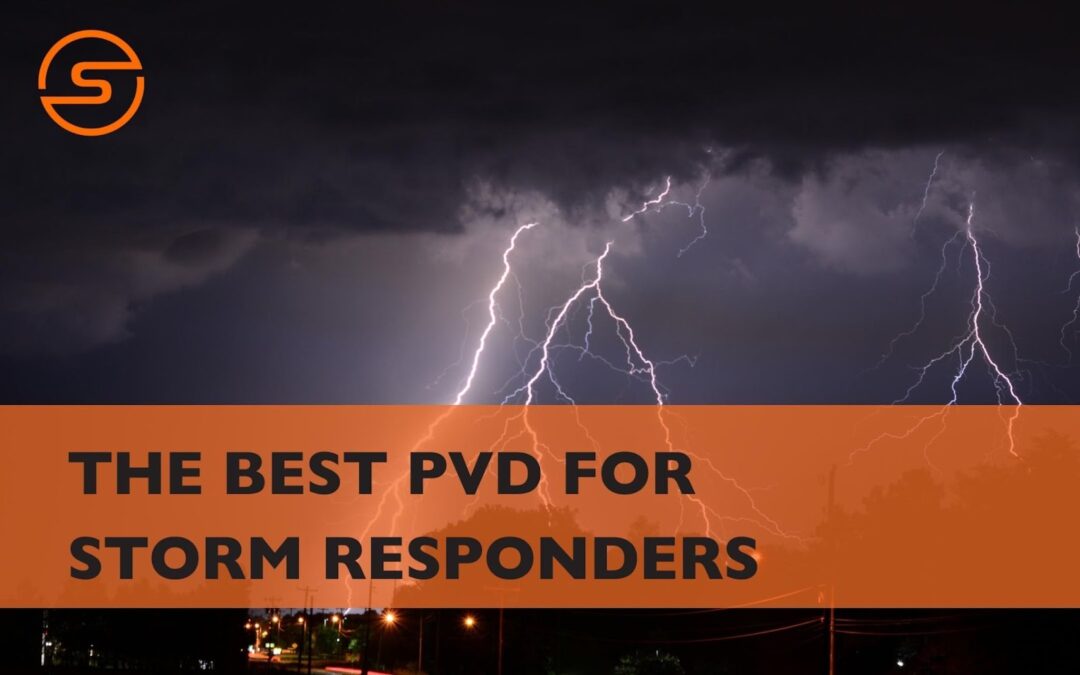As summer starts to wind down, many people begin thinking about preparations for fall. For some, it means doing things like getting ready for school and storing lawn furniture. Soon they’ll start to pack away the tank tops and swim trunks, and pull out sweaters and rain slickers.
But for storm responders, the preparation is a bit different. For them, it’s time to gear up for some hard work.
Autumn may be a time of rainy days, trees turning color, and raking leaves, but it is also the time when a lot of adverse weather events occur. While natural disasters can happen any time of year, fall is often a peak season for thunderstorms, windstorms, derechos, and hurricanes all over the country.
These disasters can happen in both urban and rural areas, in mountains and in forests, in coastal areas and inland. They can cause fires, downed trees, damaged houses, floods, and downed power lines. The men and women who are storm responders have to address a myriad of situations, all with the goal of protecting and saving lives. Most of the time, it is difficult for them to anticipate exactly what they will find when they arrive on scene at a disaster, which means they have to be prepared for anything and everything.
The Utility of the Personal Voltage Detector
When you are in the midst of disaster response, you are often preoccupied with the devastation you see around you. While you are picking your way into a building or home to carry out search and rescue operations, or you are navigating a rural avenue trying to get around downed trees in a storm, your focus on the immediate problem in front of you may distract you from watching out for an imminent danger that you do not see: a live electrical wire.
This is where a personal voltage detector, or PVD, comes in.
Standard procedure for utilities is to shut down power anywhere and anytime there is a natural disaster, but this is not always a straightforward proposition. While power companies may be able to react to specific reports of damage, they don’t always know when or where a power line goes down as a storm is in progress. And without this information, when a tree hits a power line, or a power pole gets knocked down, storm responders may be called to provide life-saving assistance exactly where energized wires may be present.
Additionally, if central power has been shut off, many homeowners and businesses utilize private generators to keep their homes or businesses operating. This adds an additional level of unpredictability to the situation.
The COMPASS G2 PVD Provides Superior Protection
With rain pouring down and wind blowing, especially if it is at night and power is out, it is pretty hard to see what you are doing and where you are going. You need all your senses to figure out what is going on and to determine what your next step is going to be. But you don’t have a sense that detects voltage or current. You need a “sixth sense.” This is exactly what a COMPASS G2 PVD can provide.
Threat Location
The Safeguard COMPASS G2 not only detects energized wires within its set sensitivity range, but it is the only PVD that can provide directional guidance on where the threat lies – other available PVDs only tell you that a threat is somewhere in the vicinity. In confusing situations such as storms or entering a dark building, the COMPASS G2 is the only PVD that can be relied upon to help you safely navigate and steer clear of an electrical threat.
Hidden Threat Detection
The COMPASS G2 does not need a direct line of sight in order to work. It has a 360-degree range of detection, and can detect voltage or current from energized wires that may be found behind walls, buried or blocked by building rubble, or waiting behind a fence or under foliage. The last thing you need to “discover” is an energized line when you are clearing away debris in a search and rescue operation.
A Hands-Free Snap-On
The COMPASS G2 snaps onto a standard hard-hat, so storm responders can simply clip it on and activate it whenever they encounter an unknown situation. It operates in all weather conditions, and will operate continuously for hours hands-free, giving storm responders an added level of protection and peace of mind.
Storm responders put their lives on the line to protect all of us. At Safeguard, we think finding ways to protect them is the least we can do. The COMPASS G2 can significantly reduce the likelihood that storm responders will suffer death or injury from contact with energized power lines. We believe every storm responder in the nation deserves that protection.
For more information or a demonstration of the COMPASS G2 PVD, contact Safeguard today.
Views: 6

